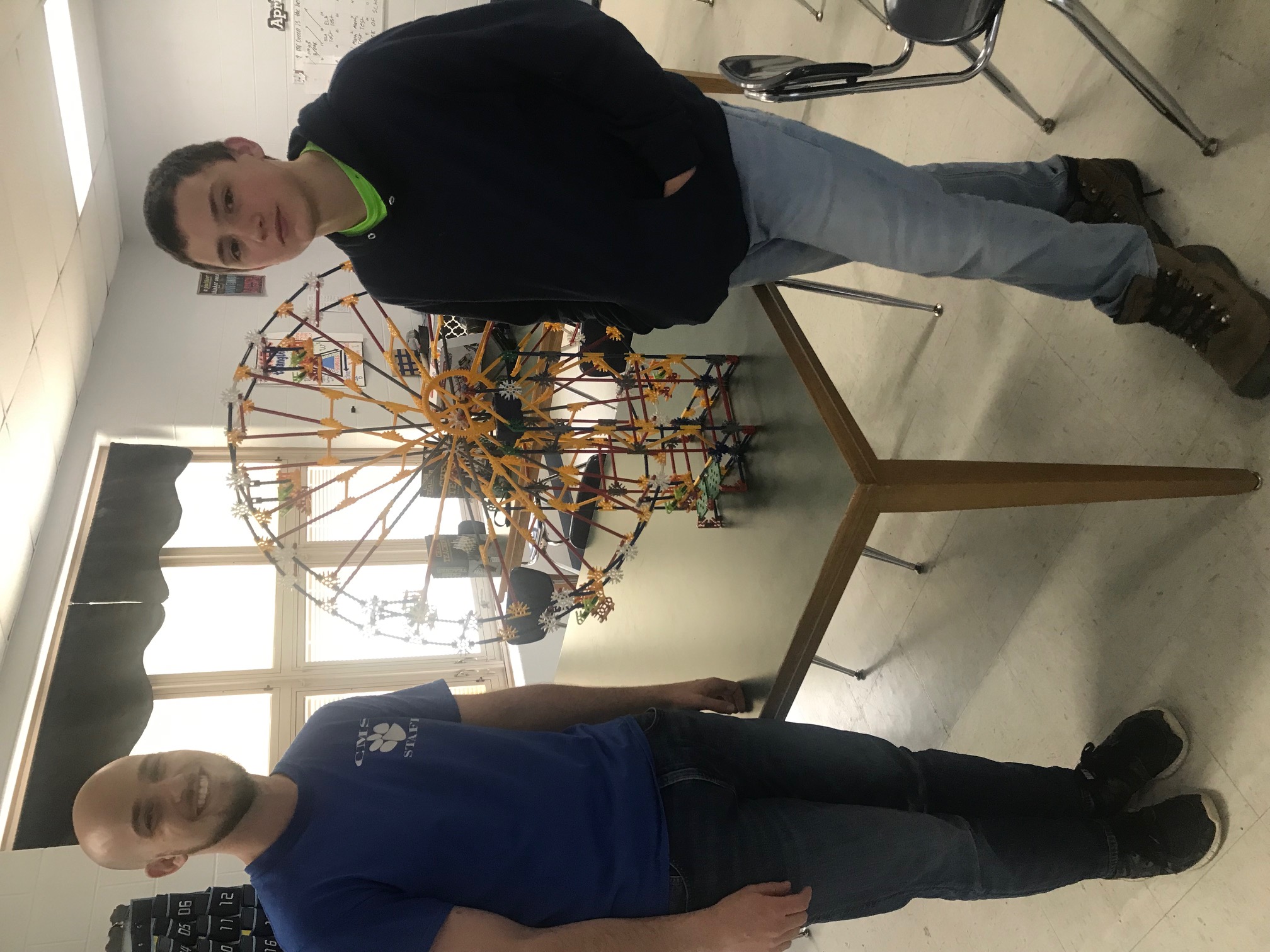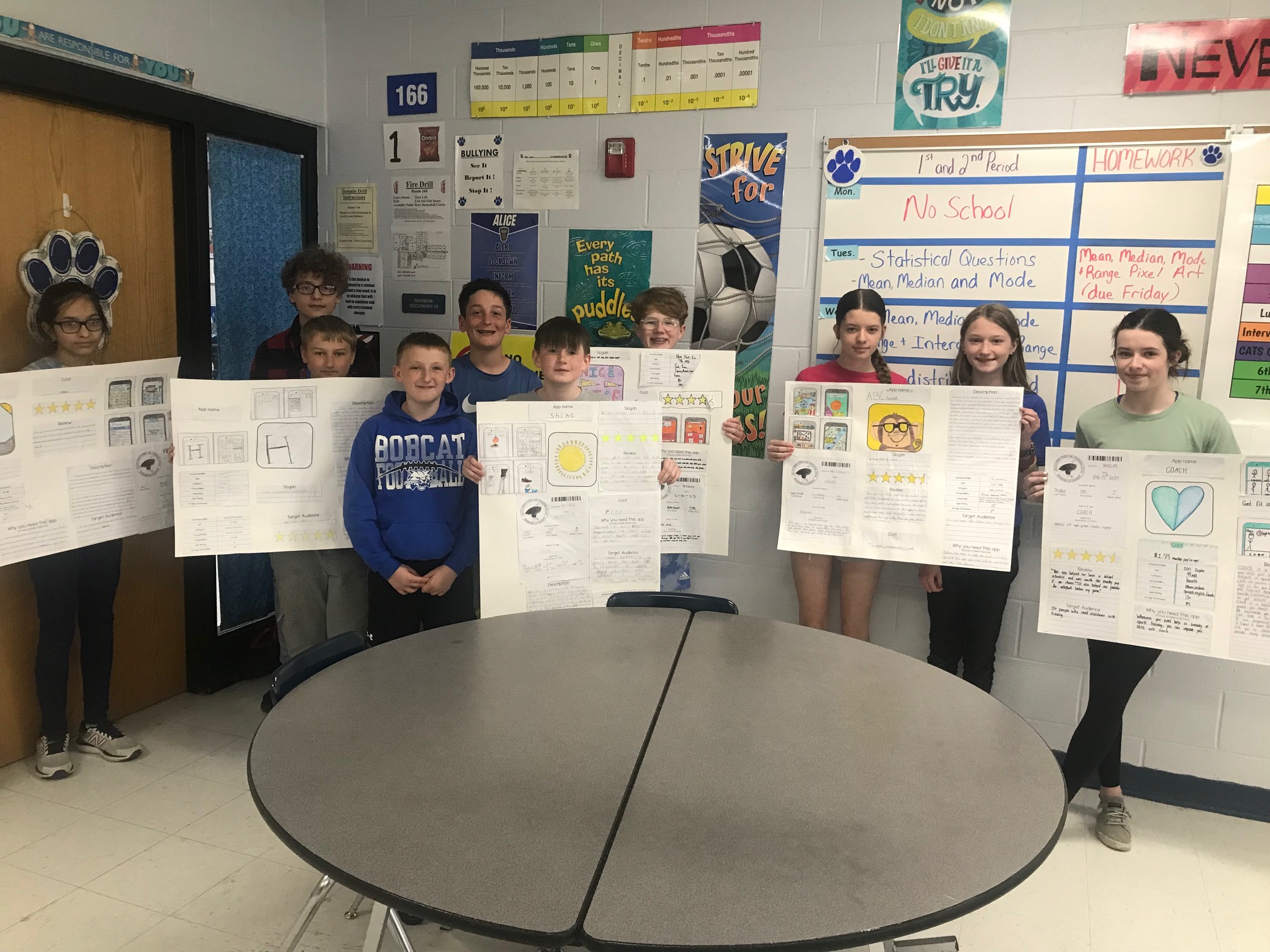While school and especially math and science can be plenty challenging for most students, there are students who enjoy and even thrive when challenged in a STEM or project-based learning environment.

A student in Mr. Green’s (pictured on left) critical thinking class used K’nex pieces to build a Ferris wheel and work on his mechanical engineering skills.
That is why Cambridge Middle School started a critical thinking class for qualified students in sixth and seventh grades.
“The idea behind this class was to challenge our high-level kids and to help extend their thinking, to make them think outside the box a little bit more,” said critical thinking teacher Kellie Spratt. “We wanted to put some project-based learning things into play to give them more opportunities for creativity.”
Spratt and Matt Green each teach about 10 students -- about 10 sixth graders and 10 seventh graders participate – who attend the critical thinking class for 30 minutes each day before or after their lunch period. During that time, they work on activities or projects that are typically hands on in nature and require the students to rely on their own thought process to complete.
“The point is to make them guide the instruction themselves,” said Green. “I tell them something and step back and see where it goes. If it is going in the right direction, I don’t tell them anything, and if it is not, I try to guide them to where they need to be.”
 Students in the critical thinking class at Cambridge Middle School display the posters they created as part of a class project.
Students in the critical thinking class at Cambridge Middle School display the posters they created as part of a class project.Spratt’s sixth grade students recently completed a project where they designed their own app. Students worked in pairs or small groups to design a purposeful app.
“They had to come up with a problem and design an app that would provide a solution to that problem,” Spratt said. “They created pictures to show what the app would look like, identify an audience, set pricing, and develop a strategy for selling the app.”
When they finished that project, the students were given a choice as to what they wanted to do next, and the seventh graders chose to design their own board games. When completed they played each other’s games and provided feedback about what they liked and didn’t like.
In the seventh-grade critical thinking class, students participated in a shark tank activity where they came up with their own inventions, made a prototype, created a presentation, and tried to sell their idea to the sharks in the shark tank.
“This took a long time because of all the steps,” Green said. “But we had Mr. (Heath) Hayes and the ladies from the office listen to the presentations like Mark Cuban does. I wanted them to ask tough questions of our students and they did. The kids seemed to like it.”
 Students in the critical thinking class at Cambridge Middle School created board games as part of a project-based learning lesson
Students in the critical thinking class at Cambridge Middle School created board games as part of a project-based learning lesson
The program started at the beginning of the second semester with a lot of the advanced math students being invited to attend. Some of the more advanced students could not join the class as they participated in other activities during the lunch choice period.
“We selected kids that that are higher level thinkers, not necessarily the most advanced or the students with the highest grades,” Green said. “We wanted the kids that think critically and encourage them to use those critical thinking skills so they can see that they are resourceful and that those are important skills.”
One of the activities involves using materials like those found in the building game called K’nex to build structures. One student in Green’ class constructed a Ferris Wheel. The hands-on projects help students with their mechanical engineering skills and putting things together.
“They seem to enjoy it and it’s pretty relaxed,” Green added. “I want them to take it seriously, but also, I don’t want them to stress about this class. I want them to jump in and not be afraid to make mistakes. They have safety net, so they know they are not going to get hurt. We just want them to try their best and see where it can go.”
Spratt agrees with Green’s approach saying, “They come in focused and enjoy trying to figure it out.”